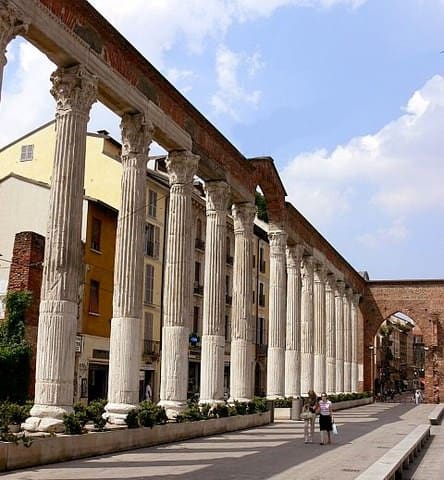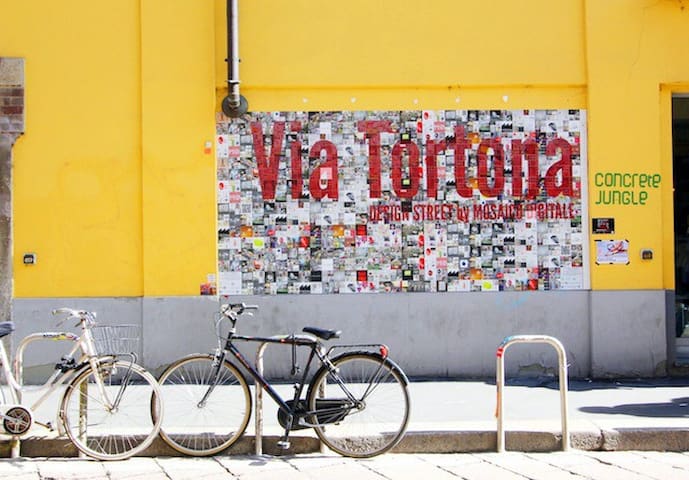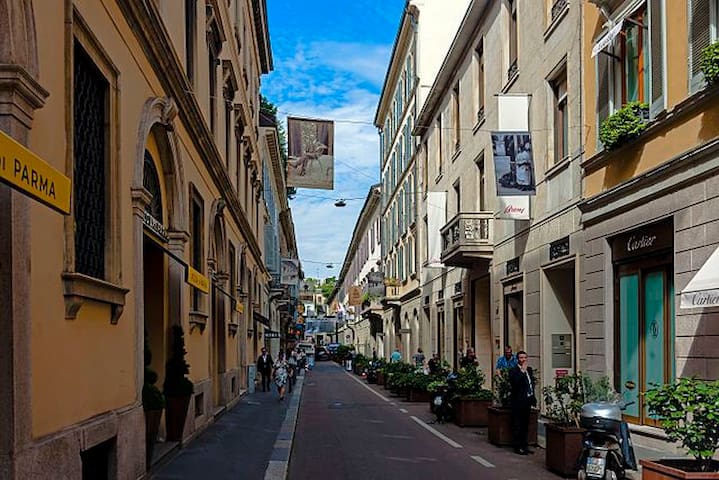Visite turistiche
One of the most ancient churches in Milan, it was built by St. Ambrose in 379–386, in an area where numerous martyrs of the Roman persecutions had been buried. The first name of the church was in fact Basilica Martyrum.
The church is mostly built in brickwork of different origins and colors, with parts of stone and white plastering. The current Romanesque church was begun around 1080.
341 (рекомендации местных жителей)
Базилика Сант-Амброджо
15 Piazza Sant'AmbrogioOne of the most ancient churches in Milan, it was built by St. Ambrose in 379–386, in an area where numerous martyrs of the Roman persecutions had been buried. The first name of the church was in fact Basilica Martyrum.
The church is mostly built in brickwork of different origins and colors, with parts of stone and white plastering. The current Romanesque church was begun around 1080.
Is the largest science and technology museum in Italy, and is dedicated to Italian painter and scientist Leonardo da Vinci.
The museum, in the ancient monastery of San Vittore al Corpo in Milan, is divided into seven main departments: Materials, Transport, Energy, Communication, Leonardo da Vinci, Art & Science, New Frontiers, Science for young people
Each of these departments have laboratories especially for children and young students. The Transport section is made up of four different parts: air, rail, water and Submarine Enrico Toti-S-506.
472 (рекомендации местных жителей)
Le Botteghe di Leonardo
55 Corso di Porta RomanaIs the largest science and technology museum in Italy, and is dedicated to Italian painter and scientist Leonardo da Vinci.
The museum, in the ancient monastery of San Vittore al Corpo in Milan, is divided into seven main departments: Materials, Transport, Energy, Communication, Leonardo da Vinci, Art & Science, New Frontiers, Science for young people
Each of these departments have laboratories especially for children and young students. The Transport section is made up of four different parts: air, rail, water and Submarine Enrico Toti-S-506.
The Colonne di San Lorenzo or Columns of San Lorenzo is a group of ancient Roman ruins, located in front of the Basilica of San Lorenzo.
In the evening is an hangout, and you can find a lot of pubs an restaurants.
552 (рекомендации местных жителей)
Колонны Святого Лаврентия
39 Corso di Porta TicineseThe Colonne di San Lorenzo or Columns of San Lorenzo is a group of ancient Roman ruins, located in front of the Basilica of San Lorenzo.
In the evening is an hangout, and you can find a lot of pubs an restaurants.
Le Guide ai Quartieri
Zona Tortona is a neighborhood (former Milanese industrial district) of Milan.
Located behind the Porta Genova railway station, the Zona Tortona is formed between the streets Savona, Tortona and Stendhal.
In the early 2000s, Zona Tortona became a fashion and design center: many projects in the neighborhood were born from industrial archeology recovery operations.
In addition to the presence of photography, design and fashion ateliers, research centers, art workshops, exhibition halls, the neighborhood welcomes spaces related to culture such as the Mudec Culture Museum, the Pomodoro Foundation and Armani Silos
63 (рекомендации местных жителей)
Zona Tortona
Zona Tortona is a neighborhood (former Milanese industrial district) of Milan.
Located behind the Porta Genova railway station, the Zona Tortona is formed between the streets Savona, Tortona and Stendhal.
In the early 2000s, Zona Tortona became a fashion and design center: many projects in the neighborhood were born from industrial archeology recovery operations.
In addition to the presence of photography, design and fashion ateliers, research centers, art workshops, exhibition halls, the neighborhood welcomes spaces related to culture such as the Mudec Culture Museum, the Pomodoro Foundation and Armani Silos
The Quadrilatero della moda (Italian pronunciation: [kwadriˈlaːtero della ˈmɔːda]; literally "fashion square"), or Via Montenapoleone fashion district, is a high-class shopping district in the centre of the Italian city of Milan, characterised by the presence of numerous boutiques and related retail outlets which represent most of the world’s major fashion houses.
175 (рекомендации местных жителей)
Quadrilatero d'Oro
10 Via Monte NapoleoneThe Quadrilatero della moda (Italian pronunciation: [kwadriˈlaːtero della ˈmɔːda]; literally "fashion square"), or Via Montenapoleone fashion district, is a high-class shopping district in the centre of the Italian city of Milan, characterised by the presence of numerous boutiques and related retail outlets which represent most of the world’s major fashion houses.
An experimental itinerary of nine stages, starting from Via San Giovanni sul Muro and arriving in San Lorenzo: in the middle of the places of Roman Milan, marked by new plaques and an innovative signage on the ground near the intersections.
The WalMi-Milan walking maps have also been installed, with directions for visiting sites, museums and monuments, on the mezzanines and in the docks of the underground stations of: Cairoli (M1), Cordusio (M1), Duomo (M1-M3), Cadorna (M1-M2), Sant'Ambrogio (M2), Porta Genova (M2).
Along the experimental route from Cairoli to San Lorenzo a new sign has been placed on the ground: 35 red 3o cm stamps, which will guide passers-by to discover the archaeological remains visible in the immediate vicinity, with an indication of the time needed to reach feet the final destination.
557 (рекомендации местных жителей)
Milan
An experimental itinerary of nine stages, starting from Via San Giovanni sul Muro and arriving in San Lorenzo: in the middle of the places of Roman Milan, marked by new plaques and an innovative signage on the ground near the intersections.
The WalMi-Milan walking maps have also been installed, with directions for visiting sites, museums and monuments, on the mezzanines and in the docks of the underground stations of: Cairoli (M1), Cordusio (M1), Duomo (M1-M3), Cadorna (M1-M2), Sant'Ambrogio (M2), Porta Genova (M2).
Along the experimental route from Cairoli to San Lorenzo a new sign has been placed on the ground: 35 red 3o cm stamps, which will guide passers-by to discover the archaeological remains visible in the immediate vicinity, with an indication of the time needed to reach feet the final destination.
Offerta gastronomica
Founded in 1933 with a menu that combines everything that "makes" Milan and "tradition" in the kitchen, from mondeghili to nervetti, to brains, to ossobuco, to the Milanese cutlet, to the Milanese risotto, to the sautéed kidney, to the foiolo alla Milanese ... as well as spaghetti, gnocchi, trofie, minestrones, scallops in marsala and so on.
51 (рекомендации местных жителей)
Trattoria Milanese
11 Via Santa MartaFounded in 1933 with a menu that combines everything that "makes" Milan and "tradition" in the kitchen, from mondeghili to nervetti, to brains, to ossobuco, to the Milanese cutlet, to the Milanese risotto, to the sautéed kidney, to the foiolo alla Milanese ... as well as spaghetti, gnocchi, trofie, minestrones, scallops in marsala and so on.






